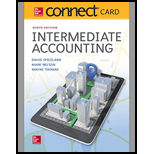
(1)
Condensed financial statement:
Condensed financial statements are statements which are prepared in addition to the traditional financial statement. It is viewed by the auditing team at the time of audit the condensed financial statements along with full financial statements for a full picture of the company’s financial status.
To Compare: The two firms greater earnings relative to resources available.
(1)
Explanation of Solution
Determine the
Rate of return on assets indicates the company’s overall profitability by excluding specific sources of finance.
Hence, Company M profitability exceeds the profitability of the Company R.
(2)
The two companies have achieved their respective rates of return on assets with similar combinations of profit margin and turnover.
(2)
Explanation of Solution
Profitability is achieved through a high profit margin or a high turnover or a combination of both.
Determine the rate of return on assets with combinations of profit margin and turnover:
Hence, Company R profit margin is less than that of Company M.
(3)
To Calculate: The rate of return on shareholders’ equity of two firms.
(3)
Explanation of Solution
Determine the rate of return on shareholders’ equity of two firms:
Rate of return on shareholders’ equity reveals the profit of the company generates with the money shareholders’ have invested.
Hence, Company R provides greater return to common shareholders than Company M.
(4)
To Calculate: The financial leverage (or) Equity multiplier of two firms.
(4)
Explanation of Solution
When the return on shareholders’ equity is greater than the return on assets, management is using debt funds to enhance the earnings for stockholders. Both firms do this. Company R has higher leverage than Company M which is used to provide a higher return to shareholders, even though its return on assets is less.
Determine the Equity multiplier of two firms:
Company R increased its return to shareholders 4.07 times (43.6% ÷ 10.7%) the return on assets. Company M increased its return to shareholders 2.34 times (34.6% ÷ 14.8%) the return on assets.
(5)
To identify: Of the two companies, which company appears riskier in terms of its ability to pay short-term obligations
(5)
Explanation of Solution
Determine the short term obligations of the two firms:
The current ratios of the two firms are comparable and within the range of the rule-of-thumb standard of 1 to 1. Acid-test ratio reveals that Company M is more liquid than Company R.
(6)
To identify: The efficient management of current assets.
(6)
Explanation of Solution
Receivables turnover ratio indicates how quickly a company is able to collect its
Inventory turnover ratio is used to determine the number of times inventory used or sold during the particular accounting period.
Determine the management of current assets through receivables turnover and inventory turnover of both the firms.
Company R receivables turnover is more rapid than Company M. Hence, its relative liquidity is not as bad as its acid-test ratio indicated.
(7)
To Identify: The creditor point of view, which company offers the most suitable margin of safety in terms of its ability to pay fixed interest charges?
(7)
Explanation of Solution
Times interest earned ratio quantifies the number of times the earnings before interest and taxes the business pay for the interest expense.
Determine the times interest earned ratio of both the firm:
Hence, Company M and Company R provides an adequate margin of safety in terms of its ability to pay fixed interest charges.
Want to see more full solutions like this?
Chapter 4 Solutions
Connect Access Card for Intermediate Accounting
- The trial balance for K and J Nursery, Incorporated, listed the following account balances at December 31, 2024, the end of its fiscal year: cash, $27,000; accounts receivable, $22,000; inventory, $36,000; equipment (net), $91,000; accounts payable, $25,000; salaries payable, $10,500; interest payable, $6,500; notes payable (due in 18 months), $41,000; common stock, $72,000. Determine the year-end balance in retained earnings for K and J Nursery, Incorporated.arrow_forwardWhat would be the total production engineering cost per unitarrow_forwardI want the correct answer with accounting questionarrow_forward
- Accountingarrow_forwardBrun Company produces its product through two processing departments: Mixing and Baking. Information for the Mixing department follows. Direct Materials Conversion Unit Percent Complete Percent Complete Beginning work in process inventory 7.500 Units started this period 104,500 Units completed and transferred out 100.000 Ending work in process inventory 12.000 100% 25% Beginning work in process inventory Direct materials Conversion $6.800 14.500 $21.300 Costs added this period Drect materials 116,400 Conversion Total costs to account for 1.067,000 1.183.400 $1.204.700 Required 1. Prepare the Mixing department's production cost report for November using the weighted average method Check (1) C$1.000 2. Prepare the November 30 journal entry to transfer the cost of completed units from Mixing to Bakingarrow_forwardNonearrow_forward

 AccountingAccountingISBN:9781337272094Author:WARREN, Carl S., Reeve, James M., Duchac, Jonathan E.Publisher:Cengage Learning,
AccountingAccountingISBN:9781337272094Author:WARREN, Carl S., Reeve, James M., Duchac, Jonathan E.Publisher:Cengage Learning, Accounting Information SystemsAccountingISBN:9781337619202Author:Hall, James A.Publisher:Cengage Learning,
Accounting Information SystemsAccountingISBN:9781337619202Author:Hall, James A.Publisher:Cengage Learning, Horngren's Cost Accounting: A Managerial Emphasis...AccountingISBN:9780134475585Author:Srikant M. Datar, Madhav V. RajanPublisher:PEARSON
Horngren's Cost Accounting: A Managerial Emphasis...AccountingISBN:9780134475585Author:Srikant M. Datar, Madhav V. RajanPublisher:PEARSON Intermediate AccountingAccountingISBN:9781259722660Author:J. David Spiceland, Mark W. Nelson, Wayne M ThomasPublisher:McGraw-Hill Education
Intermediate AccountingAccountingISBN:9781259722660Author:J. David Spiceland, Mark W. Nelson, Wayne M ThomasPublisher:McGraw-Hill Education Financial and Managerial AccountingAccountingISBN:9781259726705Author:John J Wild, Ken W. Shaw, Barbara Chiappetta Fundamental Accounting PrinciplesPublisher:McGraw-Hill Education
Financial and Managerial AccountingAccountingISBN:9781259726705Author:John J Wild, Ken W. Shaw, Barbara Chiappetta Fundamental Accounting PrinciplesPublisher:McGraw-Hill Education





